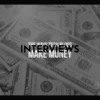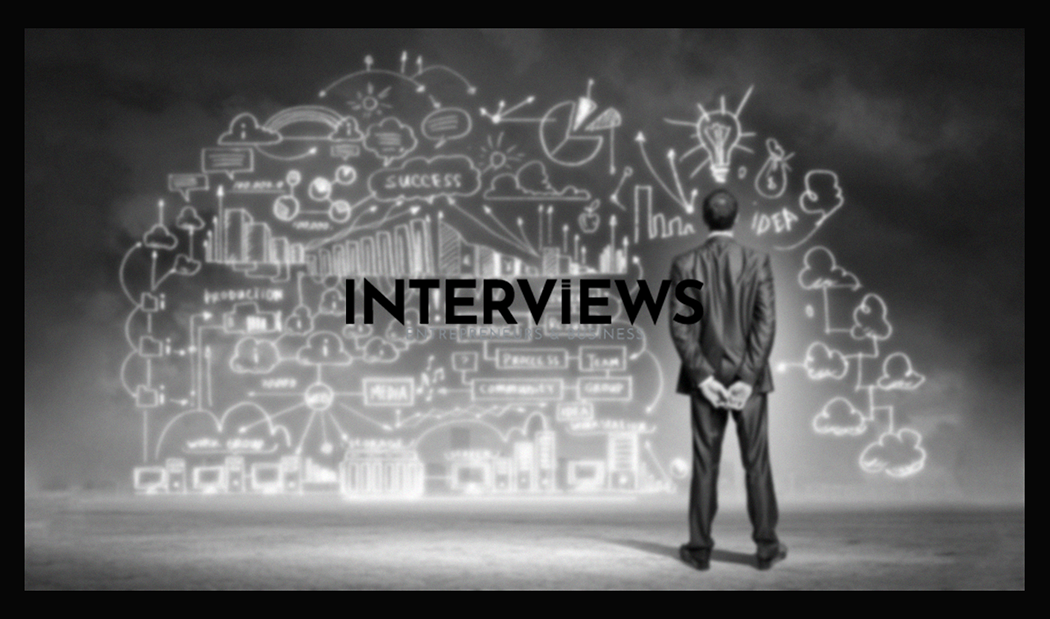Unlocking the Power of Leverage: Do More With Less (Like a Boss)
Ever feel like you’re pushing a boulder uphill with a teaspoon? We all have. But what if there’s a secret weapon? A way to amplify your efforts and get big results without breaking your back? That’s Leverage. Leverage means working smarter. Let’s explore what leverage means, how to use it, and avoid face-plants.
What Exactly IS Leverage? Let’s Break it Down
Think of leverage as your superpower. In simple terms, leverage is influencing situations or people to control results. It’s using what you have – resources, skills, connections – to maximize impact. Imagine a seesaw; a little effort on one end lifts something heavier on the other. That’s the magic of leverage.
Here are some definitions:
- The Control Master: “Leverage is the ability to influence situations or people so that you can control what happens.” It’s being a puppet master, in a good way.
- The Amplifier: “Leverage is using given resources in such a way that potential outcomes are magnified.” This shows leverage can bring big wins and big mistakes.
- The Debt Dance: “Leverage is using debt to amplify returns from an investment.” We’ll explore financial leverage later.
- The Wealth Builder: “Leverage boosts returns on your investments for sustainable wealth.” Who doesn’t want to build wealth sustainably? Leverage can help you grow stronger financially.
- The Physics Lesson: “Leverage is getting an advantage by using a lever to lift something.” Simple, powerful, effective.
- The Diplomat’s Toolkit: “Leverage is the amount of diplomatic capital you have over another Empire.” Even in diplomacy, leverage is about having upper-hand influence.
Types of Leverage: From Finance to Life Hacks
Leverage isn’t one-dimensional. It comes in various forms, each with rules and possibilities.
- Financial Leverage: The Debt Daredevil. This is where money can get amplified, for better or worse. Financial leverage is “the use of debt financing to magnify returns, but it increases risk too.” It’s borrowing money to invest; good returns amplify profits but losses can be amplified too.
- Operating Leverage: The Fixed Cost Factor. Operating leverage “measures changes in sales volume affecting earnings due to fixed costs.” Companies with high fixed costs can see huge profit jumps when sales rise. But, if sales drop, profits may plummet quickly.
- Combined Leverage: The Double Whammy. “Combined Leverage is the mix of operating and financial leverage; it shows total impacts of fixed costs and debt on earnings.” It shows income sensitivity when both types of leverage are present. High combined leverage can mean wild earnings swings.
- The Four C’s of Leverage: The Modern Toolkit. Leverage takes different forms today. The “Four C’s—Content, Code, Capital, and Collaboration—help achieve more with less effort.”
- Content: Create once, reap benefits multiple times. Think blog posts and videos that work for you nonstop.
- Code: Software/automation/algorithms can perform tasks endlessly.
- Capital: Money can generate more money; that’s financial leverage.
- Collaboration: Working together multiplies efforts with teamwork.
These “C’s” are crucial for modern leverage in businesses and personal projects. Mindtools has resources to explore achieving more with less.
- Physical Leverage (The Literal Kind). Don’t forget the original meaning! Leverage also applies physically. Tools and processes help make tasks easier. Even a wheelbarrow uses leverage for moving heavy objects without strain.
Cranking Up the Leverage: How to Increase Your Impact
How do you gain more leverage in life and work? Focus on core strategies:
- Maximize Output, Same Input: The Efficiency Booster. “Maximize output, holding input constant.” This is efficiency. How can you get more from a $100 investment? Think of improving skills or processes for better results.
- Minimize Input, Same Output: The Smart Cutter. “Minimize input, holding output constant.” Work smarter. Can you gain the same results with less effort, resources, or time? Think delegation or automation to achieve results fast.
- Strategic Financial Tools: The Calculated Risk Taker. “To increase leverage, explore debt financing or margin trading.” These amplify returns but come with risks. Understand potential downsides before diving into financial leverage tools.
- Personal Strengths and Assets: The You-Factor Multiplier. “You can leverage personal strengths and assets.” Don’t underestimate your skills, talents, and network. Use your strengths to achieve more. Indeed.com offers great advice here.
Leverage in Action: Real-World Scenarios
Leverage is a practical tool for many situations.
- Negotiations: The Upper Hand. “In negotiations, gain leverage by positioning the opposing negotiator in a less flattering light.” Where you come from changes your perspective. Leverage means having stronger positions, more options, better information, or the ability to walk away.
- Relationships: The Value Creator. “Leveraging relationships means creating value through connections.” It’s about win-win situations. Build strong connections for mutual support to amplify everyone’s efforts—collaborative leverage matters.
- Self-Motivation: The Inner Drive. “Look to your own story for inspiration.” Even self-motivation can be leveraged! Use past experiences, your “why,” to push through challenges and achieve goals.
Financial Leverage: The Nitty-Gritty Details
Since financial
Leverage is a key type. Let’s explore some specifics.
- Debt for Growth: The Investment Amplifier. “Financial leverage is borrowing money to invest for higher returns.” Essentially, it means using borrowed funds to earn more. If your returns exceed costs, that difference becomes your amplified profit.
- Diversification through Loans: The Portfolio Expander. “You can use a loan to diversify your investments if heavily concentrated.” With leverage, you can branch out. If you’re focused on one area, a loan provides capital to reduce risk. However, it also brings the risks of debt.
- Mortgages: The Homeownership Enabler. “A mortgage allows you leverage for a more expensive home instead of paying cash.” Real estate mortgages exemplify financial leverage. They enable control over large assets. You need a smaller initial investment. The mortgage increases your purchasing power.
- Margin Trading Facility (MTF): The Trading Tool. “MTF enables you to purchase shares by paying only part of the total cost.” Margin trading is a direct form of financial leverage. You borrow from brokers to buy more shares. This brings the potential for bigger gains, but also for larger losses.
The Dark Side of Leverage: Risks and Downsides
Leverage is not a magic money tree. It’s a tool that can be dangerous if misused.
- Amplified Losses: The Downward Spiral. “It offers high risk, as leverage amplifies losses during downturns.” This is crucial. Leverage magnifies gains and losses. During market downturns, losses can outstrip profits.
- Account Wipeouts: The Trading Trap. “Highly leveraged trades can quickly deplete your account if they go against you.” In trading, a few wrong moves can rapidly wipe out your account. Larger positions increase potential losses significantly.
- Losses Exceeding Investment: The Deep Hole. “Leverage can lead to losses exceeding your initial investment.” In extreme cases, you can lose more than your investment. This risk escalates in volatile markets and with leveraged derivatives.
- Debt Overload: The Company Killer. “Too much debt can cause companies to default or go bankrupt.” Excessive debt becomes burdensome. High levels of financial leverage increase risks during economic downturns.
- The Addiction Factor: The Emotional Rollercoaster. “Leverage magnifies gains, which can be addictive.” There’s a psychological element. The thrill of gains can lead to overconfidence and reckless behavior. Remember that markets can change, leading to unexpected backfires.
Navigating Leverage Safely: Strategies and Considerations
How can you harness leverage without risks? It involves smart strategies and careful considerations.
- Have an Exit Strategy: The Escape Route. “Develop an exit strategy for trades with profit targets and stop-loss levels.” Always plan for exits. In leveraged investments, identify profit targets and stop-loss levels. Avoid emotional exits; stay with your plan.
- Risk Awareness: The Reality Check. “Understand high leverage risks, leading to magnified losses.” Always remember leverage amplifies risk. Be honest about your risk tolerance and knowledge of potential downsides. High leverage suits knowledgeable investors only.
- Volatility Management: The Storm Watcher. “Recognize how market volatility impacts leveraged positions.” Volatility complicates leverage. Rapid fluctuations can trigger unexpected losses. Be prepared for volatility and potential liquidations.
- Interest Costs: The Fixed Drain. “Interest increases your breakeven point.” Remember that borrowed money incurs interest costs. Higher interest elevates your breakeven point, requiring stronger returns just to break even.
- Start Small: The Beginner’s Tip. “Beginners should use low leverage to limit losses and manage risk.” If new to leverage, begin with small amounts. It builds experience without risking large losses while you learn.
- Negative Balance Protection: The Safety Net. “Negative balance protection prevents traders from losing more than their account balance.” Some brokers offer this during volatile markets. This safety net protects against exceeding account balance losses.
Developing Leverage in Your Life: Beyond the Balance Sheet
Leverage extends beyond finance. It involves a mindset that enhances effectiveness in all life areas.
- Maximize Your Assets and Strengths: The Inner Goldmine. “Leverage your skills, talents, experiences, and network.” Your unique strengths are assets. Identify and utilize them effectively. How can you leverage those to achieve goals?
- Combine Your Talents: The Synergy Creator. “Use your diverse skills in the best combination.” Don’t compartmentalize skills. Look to blend talents and experiences for synergy. Sometimes, powerful leverage arises from unexpected combinations.
- Friendships and Networks: The Support System. “Support others to build genuine relationships.” Build strong networks by being supportive. This reciprocity amplifies everyone’s success.
- Saving and Investing: The Future Multiplier. “Leverage emerges when saving money instead of spending.” Saving represents a form of leverage. Saved funds can generate income and future opportunities. This delayed gratification yields amplified potential.
Leverage in Negotiation: Gaining the Edge
Negotiation allows for leveraging positions and skills. Here are strategies for gaining an upper hand:
- Positioning and Perception: The Mind Game. “Highlight inconsistencies in the other party’s position.” Influence how others perceive the opposing negotiator. Subtlety in perception can lead to gaining advantage in negotiations.
- Control Yourself and the Situation: The Zen Master. “Maintain composure, control the environment and yourself.” Control is critical. Keep calm and manage the meeting environment. Emotional outbursts weaken negotiating positions.
- Perspective is Power: The High Ground. “Assess your perspective entering a situation.” Understanding your perspective influences negotiation approach. Broaden views can reveal missed leverage points.
Key Leverage Elements and Strategies: The Cheat Sheet
Let’s distill core principles of leverage.
into actionable strategies:
- Maximize Output, Minimize Input: The Efficiency Mantra. “Maximize output, holding input constant” and “Minimize input, holding output constant.” Always seek ways for better results with the same effort or the same results with less effort. Efficiency leads to leverage.
- Leverage Your Strengths: The Unique Advantage. “You can also exert leverage by getting the most from your assets and taking full advantage of your personal strengths.” Focus on what you excel at. Your unique skills stand as your leverage points. Tony Robbins highlights leverage’s role in life and business.
- Identify Your Unique Value: The Differentiator. “What relevant skills and strengths do you have that others don’t?” Consider what you can offer that others cannot. This unique value becomes your leverage. Emphasize it, develop it, and utilize it wisely.
- Tap into Your “Why”: The Motivation Fuel. “When looking for your self-motivation, look to your own story to find someone dissatisfied with where they were in the world, honor their entrepreneurial spirit, and look to your future.” Your dissatisfaction and vision are potent motivators. Use these drivers to propel and overcome.
Important Leverage Considerations: The Fine Print
A few critical points to keep in mind about leverage:
- Leverage as a Mindset: The Behavioral Edge. “Leverage is best viewed as a behavioral trait.” Leverage goes beyond techniques; it embodies a mindset. It involves a constant hunt for smarter, efficient paths to achieve goals.
- Magnification – Good and Bad: The Double-Edged Sword (Again). “Leverage (or gearing) is using given resources in such a way that the potential positive or negative outcome is magnified.” Remember leverage magnifies both gains and losses. It deals with upside potential and downside risk.
- Self-Motivation is Key: The Inner Engine (Revisited). “When looking for your self-motivation, look to your own story to find someone dissatisfied with where they were in the world, honor their entrepreneurial spirit, and look to your future.” Personal drive is foundational to using leverage effectively. Without it, leverage strategies may fail.
The Four C’s of Leverage: A Modern Summary
Let’s quickly revisit the modern toolkit of leverage – the Four C’s:
- Content, Code, Capital, and Collaboration: The 21st-Century Levers. “Content, Code, Capital, and Collaboration” represent significant forms of leverage today. Master these elements for greater results.
Bargaining Power: Negotiation Leverage Tactics
Back to negotiation. Here are specific tactics to boost your bargaining power:
- Set the Stage: The First Impression. “Set the stage for getting to yes.” Control the environment, timing, and negotiation tone to benefit you. First impressions hold weight.
- Document Everything: The Record Keeper. “Take copious notes of what is being said and what has been agreed to.” Keep detailed notes for backup. Documentation offers power.
- Dress the Part: The Image Amplifier. “Dress appropriately.” Your attire sends a message. Dress to project confidence and respect.
- Bring Support: The Team Advantage. “Have support.” A team or advisors can enhance your position and offer varied perspectives. Numbers have strength.
- Back-Up Material: The Evidence Locker. “Bring back-up material.” Prepare factual data and documents to support your claims. Information serves as leverage.
- Less is More: The Power of Silence. “Say less, not more.” Avoid oversharing. Listen more. Silence can prove powerful over constant noise.
- Be Ready to Walk: The Ultimate Leverage. “Be ready to walk away.” The strongest leverage comes from the willingness to walk away. Nonchalance strengthens your position.
Negotiation Skills: The Leverage Multipliers
Apart from tactics, certain skills are key for effective negotiation:
- Know Your Goal: The Clarity Compass. “Know exactly what you want.” Be clear about your objectives pre-negotiation. Clarity offers power.
- Do Your Homework: The Information Advantage. “Do your homework.” Understand the other party, situation, and market. Knowledge boosts leverage. More information strengthens positioning.
- Empathy: The Perspective Shifter. “Place yourself in their shoes.” Recognize the other party’s needs. Empathy reveals leverage points and win-win outcomes.
- Win-Win Mindset: The Collaborative Approach. “Aim for a win-win situation.” Negotiation isn’t zero-sum. Seek mutually beneficial outcomes that provide value to all involved. Collaboration serves as leverage.
- Direct Communication: The Clarity Catalyst. “Be direct.” Communicate straight and simply. Avoid vagueness; directness fosters trust and efficiency.
- Stay Calm: The Emotional Stabilizer. “Don’t lose your cool.” Keep emotional control during negotiation. Losing composure weakens position and disrupts progress.
- Know When to Fold: The Strategic Retreat. “Know when it’s time to walk away.” Identify when negotiations don’t serve you and be prepared to leave. Sometimes, no deal is best.
Turning Strengths into Opportunities: Leverage for Growth
Your strengths benefit both you and others. Leverage them for mutual growth.
- Share Your Knowledge: The Ripple Effect. “Finally, turn your strengths into growth opportunities by sharing them with others.” Don’t keep strengths hidden. Teaching, mentoring, and coaching disseminate skills and foster growth.
- Teach, Mentor, Coach: The Growth Catalysts. “You can do this by teaching, mentoring, or coaching others who want to learn or improve your skills or qualities.” Sharing knowledge benefits others and enhances your understanding, creating new opportunities.
Leveraging a Growth Mindset: The Perpetual Learning Machine
A growth mindset serves as powerful leverage, promoting continuous learning, adaptation, and growth.
- Growth vs. Performance Focus: The Long Game. “Know the Difference between Growth and Performance.” Focus on learning and development beyond short-term outcomes. A growth mindset emphasizes long-term progress over immediate success.
- Limit Fixed Mindset: The Mindset Shift. “Limit Your Fixed Mindset.” Challenge beliefs that restrict potential. Embrace difficulties; trust in the ability to improve and learn.
- Perpetual Education: The Lifelong Learner. “Perpetual Education.” Commit to lifelong learning and self-betterment. The more knowledge you acquire, the greater your leverage.
- Embrace Failure: The Learning Opportunity. “Fail to Succeed.” View failures as occasions for learning rather than setbacks. Failure contributes vital lessons to growth.
- Welcome Challenges: The Growth Zone. “Welcome Challenges.” Seek challenges; push yourself outside comfort zones. Growth occurs in these areas.
- Listen Actively: The Feedback Loop. “Listen.” Be receptive to feedback. Active listening helps foster growth and improvements.
- Celebrate Others’ Wins: The Abundance Mentality. “Celebrate Others’ Achievements.” Recognizing others’ success promotes an abundance mentality. Support for each other enhances growth for all.
- Tenacity: The Perseverance Power. “Be Tenacious.” Build tenacity for growth. Results require time and effort; persist even during challenges.
No Leverage? No Problem: Strategies When You’re in a Weak Position
Sometimes, you find yourself in situations lacking leverage. Stay hopeful! Strategies can help:
- Shift to Their Interests: The Needs Navigator. “Shift Focus to Their Interests.” Lacking direct leverage? Understand others’ interests and needs. Finding common ground presents unexpected leverage.
- Tap into Creativity: The Out-of-the-Box Thinker. “Tap Into Creativity.” Explore innovative solutions that alter dynamics. Creativity can establish leverage where none appeared before.
- Thorough Preparation: The Knowledge Weapon. “Thorough Preparation.” Even without inherent leverage, thorough preparation can balance the field. Be the most informed in the room.
- Strategic Communication: The Persuasion Power.“Strategic Communication.” Use effective communication strategies to influence others and strengthen your negotiating position.
- … “Communicate strategically. Be persuasive. Frame arguments well. Highlight benefits for the other party.”
- Stay Positive and Flexible: The Adaptive Approach. “Stay positive. Be flexible. A good outlook and adaptability can turn a bad situation into a good one.”
- Know When to Walk Away: The Self-Respect Move. “Know when to walk away. This is powerful, even without leverage. It shows value for your time.”
High Leverage Practices: A Quick Note
In education, certain practices have a big impact on outcomes. These are “high leverage” practices:
- Collaboration, Data, Instruction, Intervention: The Education Pillars. “Collaboration, data-driven planning, behavior instruction, and intervention.” These categories focus on teamwork, data decisions, quality instruction, and targeted help.
Transferable Skills: Leverageable Assets
Some skills transfer well across many situations. They are your portable assets:
- Communication, Problem-Solving, Leadership, Technical Abilities: The Universal Leverage Skills. “Communication, problem-solving, leadership, and technical skills.” These are valuable in many fields. Developing these increases your leverage in work and personal life.
Leverage amplifies your efforts. It maximizes impact and helps achieve more with less. This concept can change your work and life. Use it wisely. Remember, great leverage also brings great responsibility and potential rewards!





